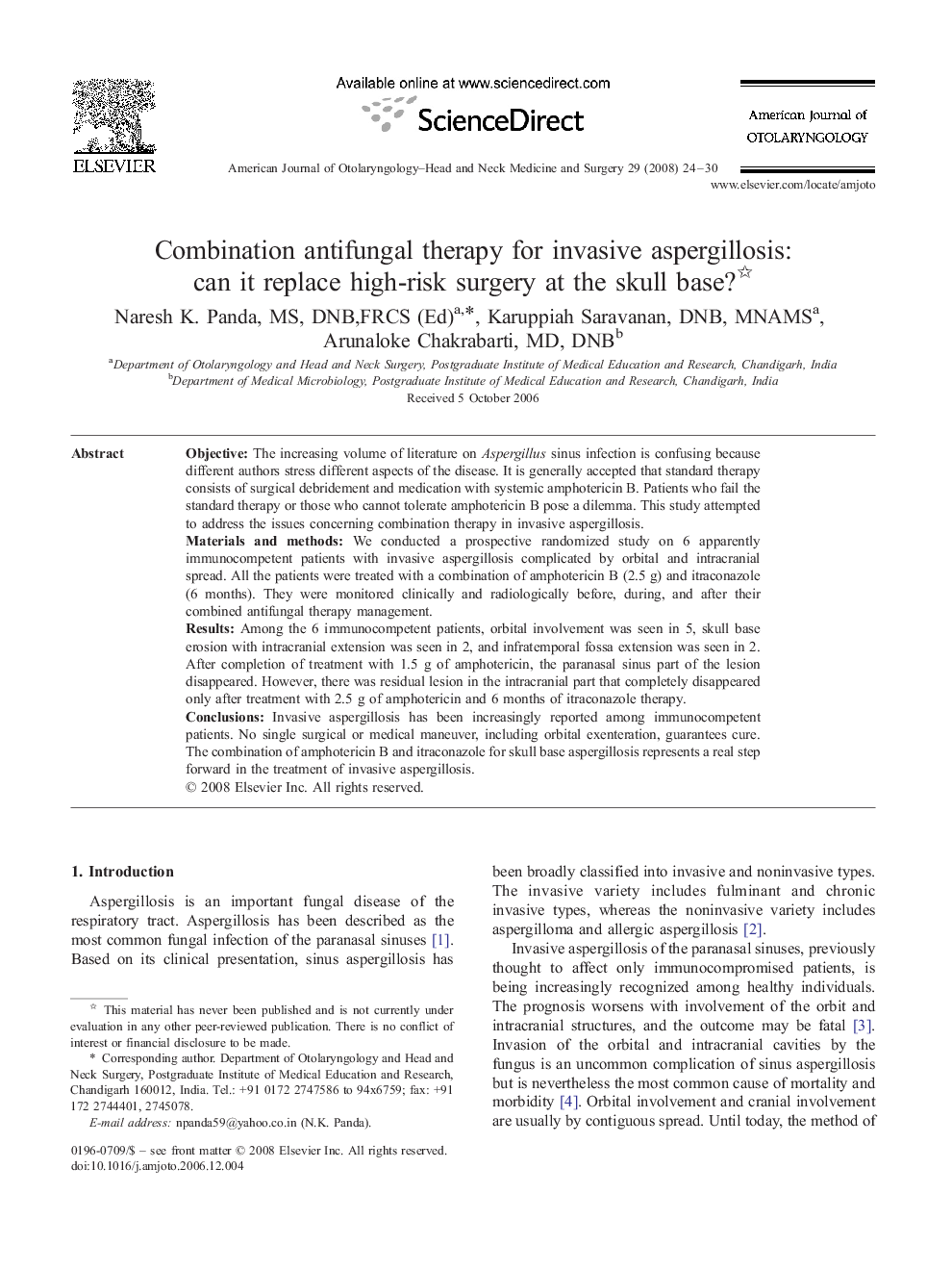| Article ID | Journal | Published Year | Pages | File Type |
|---|---|---|---|---|
| 4104478 | American Journal of Otolaryngology | 2008 | 7 Pages |
ObjectiveThe increasing volume of literature on Aspergillus sinus infection is confusing because different authors stress different aspects of the disease. It is generally accepted that standard therapy consists of surgical debridement and medication with systemic amphotericin B. Patients who fail the standard therapy or those who cannot tolerate amphotericin B pose a dilemma. This study attempted to address the issues concerning combination therapy in invasive aspergillosis.Materials and methodsWe conducted a prospective randomized study on 6 apparently immunocompetent patients with invasive aspergillosis complicated by orbital and intracranial spread. All the patients were treated with a combination of amphotericin B (2.5 g) and itraconazole (6 months). They were monitored clinically and radiologically before, during, and after their combined antifungal therapy management.ResultsAmong the 6 immunocompetent patients, orbital involvement was seen in 5, skull base erosion with intracranial extension was seen in 2, and infratemporal fossa extension was seen in 2. After completion of treatment with 1.5 g of amphotericin, the paranasal sinus part of the lesion disappeared. However, there was residual lesion in the intracranial part that completely disappeared only after treatment with 2.5 g of amphotericin and 6 months of itraconazole therapy.ConclusionsInvasive aspergillosis has been increasingly reported among immunocompetent patients. No single surgical or medical maneuver, including orbital exenteration, guarantees cure. The combination of amphotericin B and itraconazole for skull base aspergillosis represents a real step forward in the treatment of invasive aspergillosis.
